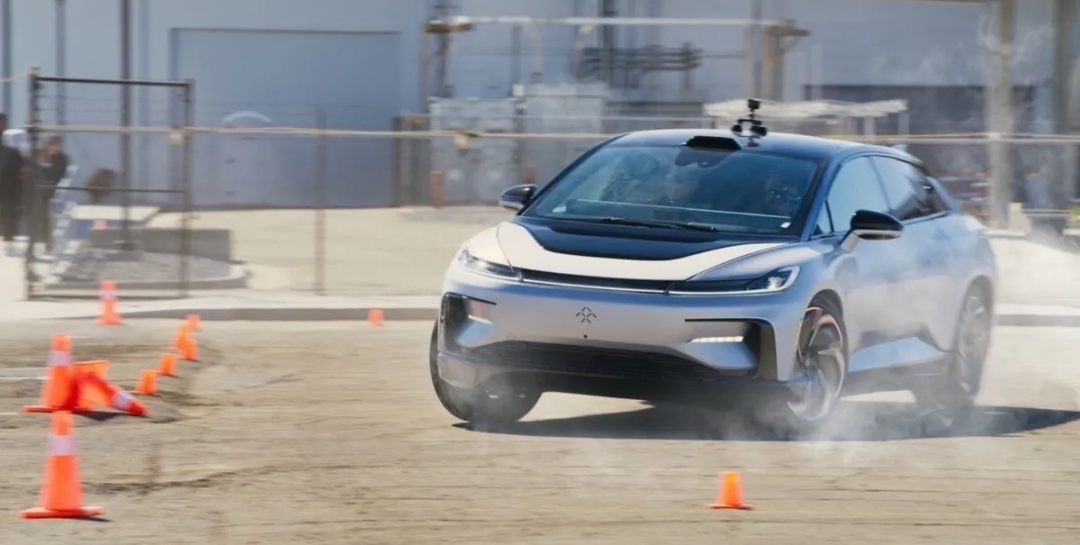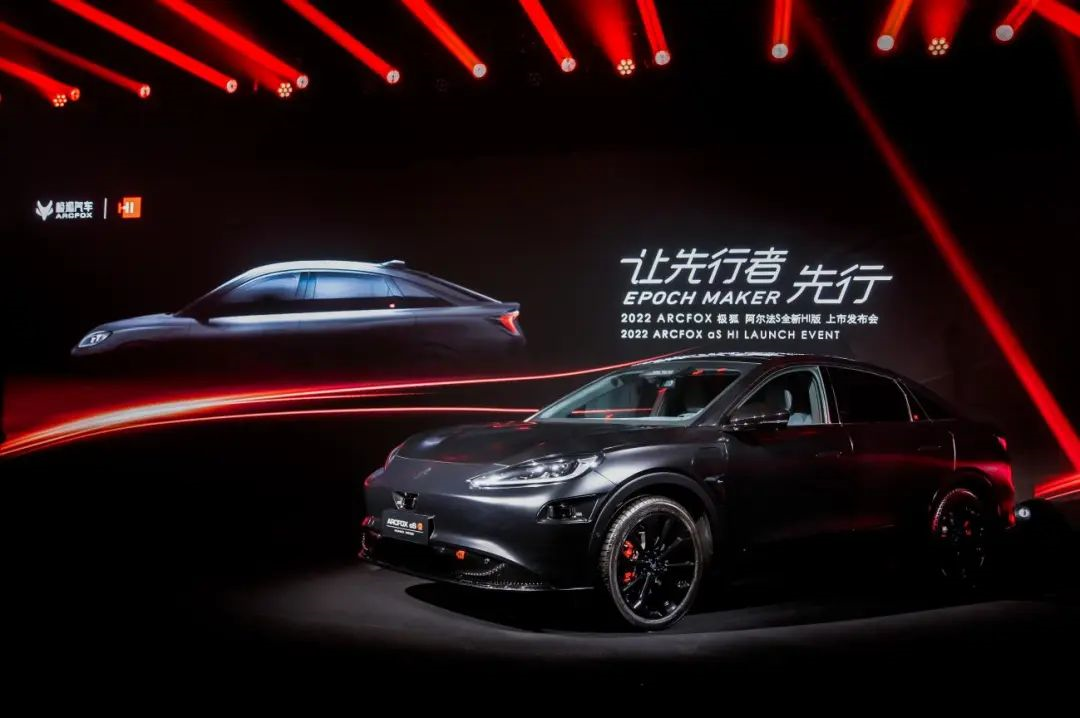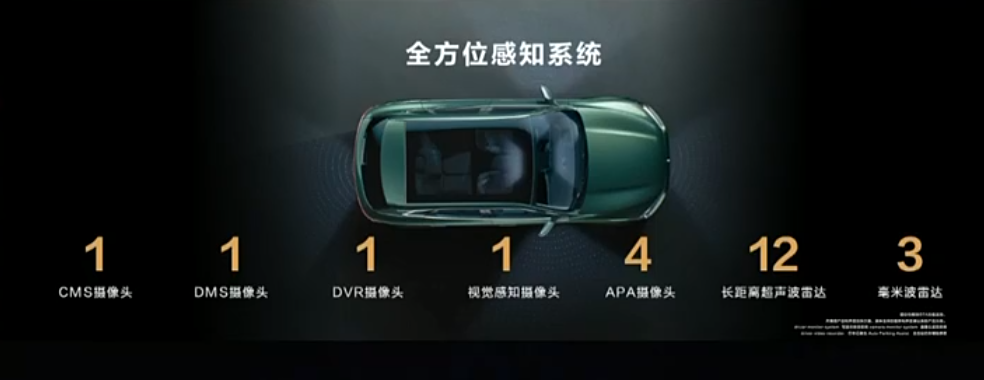By Fish and Chips
“Wow, this car is amazing!”
“Quick, look!”
“Look, look!”
“Look, look, look!”
…
It was almost a year ago, in the evening, when one of my self-driving car fanatic friends sent me a Weibo mini-program window, and urged me to open it.
What appeared was a two-minute self-driving road test video.
In the video, the test vehicle drove into a section of a road where delivery guys were gathered, and suddenly there were cars coming towards it, electric bikes swerving around corners, pedestrians preparing to cross the road, and even a new electric bike passing the test vehicle by brushing against its side mirror from behind.
Unexpectedly, even facing such complex urban road conditions, the test vehicle remained in self-driving mode, stopping when it needed to, crawling when it needed to, and then slowly passing through this “hell challenge” section of road.
“Oh my God! This car is amazing!” I stupidly repeated what my friend sent me, “JiHu is going to make it!”
Yes, the “test vehicle” that appeared several times in the above paragraph is a JiHu Alpha S Huawei HI Edition.
The reason why this memory is so clear for me is, on the one hand, the performance of the car in the video left a deep impression on me, and on the other hand, a few days later was the 2021 Shanghai Auto Show.
It was at the Shanghai Auto Show that the JiHu Alpha S Huawei HI Edition, with a starting pre-sale price of ¥3.889 million, made its debut, and JiHu announced that the new version of the car would be delivered later.
“Just didn’t expect that for many friends who were paying attention to this car, this ‘later’ meant more than a year.”
The Handshake of Two Middle-aged Men
More than a year later, the JiHu Alpha S brand new HI Edition is officially on the market.
During the preheating phase, sharp-eyed netizens noticed that there was a change in the name of the “JiHu Alpha S brand new HI Edition”, as the “Huawei” in the name was replaced with “brand new”. Is it possible that this car’s “Huawei-ness” has decreased?
I thought at the time, actually this kind of worry is unnecessary, “HI” means “Huawei Inside”, right?
The subsequent development is also in line with my expectations. A few minutes after the press conference started, Liu Yu, Chairman of the Board of Directors of BAIC New Energy, invited Wang Chengdong, CEO of Huawei’s Intelligent Car Solution BU to the stage.
“Two struggling partners, a world-class good car.”
This is how the new HI version of the Alpha S from both parties is defined. The two of them witnessed together the new stage of the Alpha S.
Here, “hand in hand” is not just talking about the cooperation between BAIC and Huawei. The two middle-aged big brothers actually held hands on the stage, and even made a “little fox” gesture together. With the lighting, music on the stage, and the host Dou Wentao’s cheering, it’s not an exaggeration to say that the two masters have a “bromance” feeling, but it really gives me a strange feeling.
However, no matter how beautiful the “little fox” gesture is, the new HI version of the Alpha S cannot avoid a core issue — delay. The two masters may feel a little embarrassed that the car has been delayed for so long. After the greetings, they took the initiative to talk about the topic of the delay.
“Some people always say that we are delaying. In fact, we have overcome many difficulties. This may be a small step for mankind, but it is a big step for us.”
Liu Yu explained the delay issue by combining hardware and software issues, and mentioned two specific examples.
The camera behind the windshield is an important source of perception for the automatic driving system, but in rainy weather, it will interfere with the camera’s image recognition. For example, the camera cannot distinguish the numbers 2, 5, and 8. To avoid this situation, it is necessary to make specific adjustments to the angle of the windshield and the middle coating in the glass.
Another example is related to the lidar. The lidar installed in the front of the car is on the front collision steel beam, which puts new requirements on the tolerance accuracy of the collision beam. The tolerance of the front collision steel beam of the ordinary version of the Alpha S is 1.5 mm, but this standard cannot meet the requirements of the lidar. To ensure the measurement accuracy of the lidar, JinFox reduced the tolerance of the front collision beam to 0.5 mm.
Wang Chengdong has his own views on the delay issue. He made four brief points.1. One reason for the delay is that the car was announced too early; 2. The development progress was affected by the epidemic; 3. New technologies have been continuously added during the mass production process, which requires more time to match with the new technologies; 4. Huawei is still a sanctioned company, which has caused some obstacles and impacts on their supply chain system.
To be honest, these reasons didn’t convince me well to accept the “delayed launch” issue, but one of the reasons mentioned by Richard Yu, “the car was announced too early,” is quite sincere.
After all, how the R&D and mass production are carried out is the business of the manufacturers, and as consumers, we only care about the final product.
After all, Mr. Jia predicted that FF91 would deliver by the end of the year four years ago.

It is better to have fewer premature releases and promises.
The Fox’s Home Game, Huawei’s Solo Performance
Richard Yu attracted most of the attention at this press conference.
During the nearly 40-minute round-table discussion among Richard Yu, Liu Yu, and Dou Wentao, Richard Yu took the majority of the speaking time. And after the round-table discussion, the entire stage of the ARCFOX release was handed over to Richard Yu alone.
As the subtitle of this paragraph says, this is the Fox brand’s press conference home game, but Huawei’s Richard Yu sang a solo.
As soon as the product segment started, the just sincere Richard turned into “Big Mouth Yu” and started to fly solo.

“This is the world’s most powerful autonomous driving system, bar none.”
This is the original wording repeatedly emphasized by Richard Yu at the press conference.
Just because Richard violated the Advertising Law publicly, we should review the specific manifestation of Huawei ICT technology in this car.

With the help of Huawei’s three electric technologies, the brand new HI version four-wheel-drive motor of JiHu Alpha S has a peak power of over 473 kW and a peak torque of over 655 Nm. With less than 3.5 seconds of zero-to-100 acceleration, it supports continuous 20-time acceleration performance with no attenuation.
As the first 750V high-voltage production vehicle platform in China, it has a maximum charging power of 187 kW and can be charged for 5 minutes with a range of 200 km.### Three FOV laser radars with a 120° horizontal and 25° vertical field of view, nine ADAS cameras, six mmWave radars, twelve ultrasonic radars, and the MDC810 intelligent driving computing platform with 400 TOPS of computing power, coupled with a high-precision map, constitute the Huawei advanced autonomous driving system.

Undoubtedly, the new Alpha S HI version of the XPeng P7 is currently the most “Huawei-rich” mass-produced vehicle on the market, from powertrains to smart cockpits to autonomous driving. Huawei’s all-around investment has raised some questions: is this another car model where Huawei takes the lead role?
Weibo’s Mr. Cao also joked about Huawei because of this, wondering which car between the new Alpha S HI, AITO Wanjie M5 and the rumored AITO M7 should be considered as Huawei CEO, Mr. Ren’s baby.

Although Mr. Cao used A, B and C to refer to these cars, it is clear that A refers to the new Alpha S HI version, B is AITO Wanjie M5, and C is the rumored AITO Wanjie M7.
In terms of brand leadership, AITO seems to be closer to Huawei. Yu Chengdong has promoted AITO Wanjie M5 multiple times, and even recently personally drove the AITO car onto the track.
But in terms of “Huawei-richness”, the new XPeng P7 on this side is obviously superior. Yu Chengdong said directly during the XPeng P7 launch conference that the Alpha S HI version has the same appearance as the regular Alpha S, but is full of Huawei’s technology inside.

On the other hand, even in the upcoming second model, M7, AITO seems to be using a monocular camera ADS-assisted driving system from Bosch.

We don’t know which one is the “baby” for sure and we wouldn’t dare to ask. However, in terms of autonomous driving ability, the new XPeng P7 is undoubtedly superior to the other two models mentioned by Mr.Cao.
As for the performance of the Huawei advanced autonomous driving system on the XPeng P7 Alpha S HI version, Yu Chengdong, who just said “this is the best autonomous driving system in the world, no one can beat it”, suddenly appeared somewhat shy.”Hope everyone can be patient, this car will become smarter as it runs.“
Considering Yu Dazui’s usual way of speaking, I can’t help but lower my expectations for this new car’s initial performance in urban autonomous driving.
I only hope that it can truly become smarter as it runs, not wasting the state-of-the-art hardware and its price.
Speaking of Yu Dazui, his past “bluffs” have slowly become a reality.
Just like what he said before: “Consumers have always believed that the best smartphone products come from Apple or Samsung. We want to change this idea and make them understand that Huawei can also produce the best quality products.”
I believe that when you see it, you will also admit that Yu Dazui’s “bulls” from those years have also come true.
But can Yu Dazui achieve the same success in the field of new energy vehicles as he did in wireless communication and terminal businesses?
Only time can give us the answer.
Can the fans still give their support?
When it comes to price, the two models of the new car are priced at 397,900-429,900 yuan, which is not cheap.
I don’t know whether to praise this new car’s precise positioning or say that it is inconsistent, coupled with its body size and autonomous driving configuration, I cannot find a particularly appropriate benchmark model.
From the perspective of autonomous driving software and hardware configuration, XPeng P5, which is equipped with two LiDARs, may be its closest competitor.
Because Yu Chengdong said that Huawei’s autonomous driving system is the strongest in the world, and XPeng’s NGP has always been the highest level in the domestic intelligent driving field. Coupled with the fact that XPeng P5 is also about to push the city NGP function, it is somewhat unreasonable to let the two cars with autonomous driving ability in urban areas compete against each other.
However, the positioning of XPeng P5 is obviously lower than that of the ARCFOX Alpha S HI version, and the body size of P5 is also smaller. Reflected in the price, the top configuration price of P5 is still lower than the lowest configuration of ARCFOX Alpha S ordinary version. The difference in positioning and price is too large, so they cannot be called competitors.
Meanwhile, the NIO’s ET7 with the same LiDAR configuration has a much larger body size than the ARCFOX Alpha S HI version, and its positioning and price are also higher than that of ARCFOX Alpha S. Therefore, it is not suitable to compare them together.
From a price perspective, the most suitable competitor might be IM L7, but IM L7 currently does not have equipped LiDAR…

Therefore, as mentioned above, it seems that there is no competitor for Alpha S HI edition of Jixu, is it good news? I don’t think so.
The price of 400,000 yuan has reached the price range of large luxury cars, but referring to the common version of Jixu Alpha S, it is actually a car with a positioning of 200-300,000 yuan. Except for the autonomous driving ability, it cannot provide the other hardware level of a 400,000-yuan car for users.
In other words, you need to pay nearly 100,000 yuan extra for this autonomous driving system.
Referring to Tesla, the price of the FSD package of more than 60,000 yuan has already made many users hesitant, not to mention a more expensive 100,000 yuan. The brand image of BAIC’s Jixu is not to be mentioned, and even Huawei may not be able to support this premium.

Facing the previously priced SF5 and AITO Wanjie M5, which are priced 200-300,000 yuan, Huawei fans may still support them by gritting their teeth due to their trust in Huawei. But when the cost of support comes to the higher 400,000-yuan level, how many fans can still bear this?
Until the real ability of Huawei’s autonomous driving system is demonstrated, this can only be a question mark.
This article is a translation by ChatGPT of a Chinese report from 42HOW. If you have any questions about it, please email bd@42how.com.
